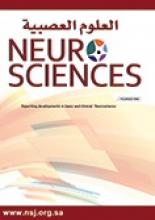Abstract
OBJECTIVE: To estimate patient preoperative anxiety, and determine associated factors.
METHODS: Fifty surgical patients were investigated prospectively at the University Hospital, Rabat, Morocco between January and June 2008. Ethical Committee approval was obtained prior to conducting this study. A short version of the Hamilton scale was used. Descriptive statistics, student’s t-test, and ANOVA were performed to probe the sociodemographic impact factors on Hamilton scores. We investigated scores superior to 14 indicating a pathologic anxiety situation. A logistic regression was carried out by including all variables; the significant threshold was 0.15 in single variable analysis, and we retained a significant threshold of 0.05 in the final model.
RESULTS: A significant decrease in anxiety from the preoperative to the postoperative stage was observed in all patients of merged surgery groups. Females had higher preoperational anxiety compared with males. A longer hospitalization stay and lower knowledge of patients regarding their pathologies were the main factors that increased the anxiety scores towards a pathological anxiety state. This applied to all patients, including higher education and prosperous social classes.
CONCLUSION: Patient sociodemographic, psychological history, and surgery type have to be considered for identifying patients at risk for developing anxiety before and after surgery. Psychological support has to be established to avoid additional suffering of the patient from anxiety.
- Copyright: © Neurosciences
Neurosciences is an Open Access journal and articles published are distributed under the terms of the Creative Commons Attribution-NonCommercial License (CC BY-NC). Readers may copy, distribute, and display the work for non-commercial purposes with the proper citation of the original work.






